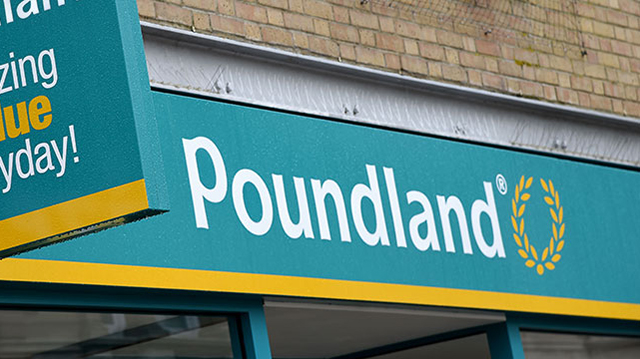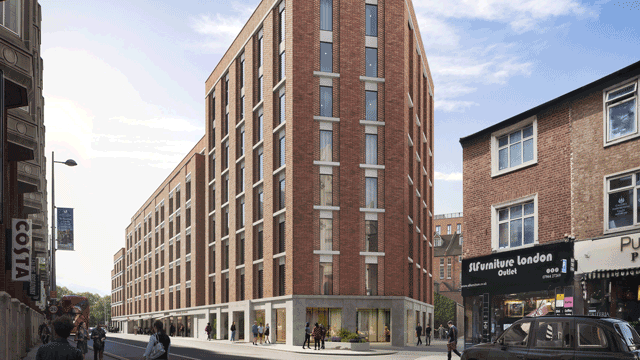Tax changes make investment more fruitful for local players, but indirect exposure is also still in fashion. Jan Harvey reports
With Dutch domestic institutional investment rising by €227m (NLG500m) in 2000, the home markets are clearly back in fashion.
Dutch domestic investment made up approximately one-fifth of the total investment in the property market last year as it rose from €680m (NLG1.5bn) to €907m (NLG2bn).
Remco Vinck, analyst at ABN Amro, says that investors’ willingness to spend heavily in the home market is a result of past experience. “In the 1980s, there was a trend for foreign investment; the property bust in the early 1990s made people less willing to invest heavily in foreign property. Many have come to the conclusion that it’s best to have local investments.”
Space still popular
While the Dutch property market is currently strong across the board, office space remains the most popular sector for investors. Office investment in 2000 rose by just under a third from the previous year to €3.3bn (NLG7.3bn), a historic high.
Available office space increased relatively slowly in 2000 compared to the massive 29% surge in building in 1999. Vacancy rates for office space in the big four cities are lower than ever, even falling below 1% in Utrecht and Amsterdam.
This has cut the uncertainty out of speculative investment, and companies have been willing to invest at the development stage. Lex Cramer, partner in Van Gool, says he has seen buildings forward sold. “A few years ago, the vacancy rate for prime offices in Amsterdam was down to 0.5%, so people are having to get involved at the development stage,” he says. “It’s not a risk.”
Lack of availability has impacted strongly on prices. In the last year, rental levels have risen 10%, nearly four times the 2000 inflation rate of 2.6%. Cramer sees this as a consequence of the IT boom of the last few years. “Many companies buying office space last year were internet companies who weren’t concerned by the level of rent they paid. This caused a high rent increase.” While the average rent increase for Amsterdam office space was 9% in 2000, highly desirable properties in the city centre saw increases as high as 28%.
Overseas investors snub Netherlands
The market for Dutch institutions has also been improved by the Netherlands’ falling popularity with overseas investors. Dutch companies accounted for around 70% of the total investment in their home market in 2000. While the Dutch market was traditionally popular with German investors in particular, changes to the country’s tax laws, which make equity profit taxable, have made the market less attractive.
“There is still foreign investment, mainly from Germany, in part because the guilder has had such strong links with the Deutschemark,” says Robert La Fors, managing director of LaSalle Investment Management. “That’s slowing down now, perhaps because of changes to the tax system.” Cramer agrees: “A few years ago, German investors were more active in the market, but now there’s less interest,” he says.
Another reason for foreign companies’ disinclination to invest in the Dutch market is the falling yields. Prime office yields in Amsterdam are down one percentage point on 1999 figures and are between 6% to 6.5%. Despite this, Dutch property overall remains amongst the cheapest in Europe, with Amsterdam appearing in 48th place on the CB Richard Ellis Global 50 index.
While investors increasing look to home markets, the shift from direct to indirect property continues. “Investors want to be asset allocators, rather than real estate operators,” says La Fors.
ABN Amro’s Vinck agrees: “Big institutions just don’t want to invest directly. We’re now seeing many of the institutions investing in the home market, particularly the bigger ones, doing so on an indirect basis. Companies such as ABP are divesting their direct property holdings in favour of indirect involvement.”
Investment scales increased
Some companies have also increased the scale of their investment through mergers, with the long-term aim of increasing efficiency. Recent high-profile merger and acquisition activity has included the VIB and WBN, and the combining of the property portfolio of Amvest with Rodamco Continental Europe in a €1.7bn (NLG3.75bn) deal.
This indirect route has also given investors access to foreign markets, particularly with property companies investing on a pan-European basis. “People are still making cross-border investments, but they’re doing so indirectly. Dutch property companies have a history of investing internationally because the Dutch property market is so small. Companies like Rodamco, for instance, have been investing internationally for decades,” says Vinck.
|
Retail back on track as large-scale projects welcomed |
|
Property availability in the retail sector dropped by one-fifth in 2000 to an all-time low of 461,000m2, with large units in particularly short supply. The government has reacted to pressure from large-scale retailers by altering planning restrictions for major units. In the past, the law limited construction of large-scale retail outlets to out-of-town locations near the major cities. New building legislation was introduced last year to allow large-scale construction on a wider variety of sites. This has led to a number of major new developments such as the 12,500m2 factory outlet store planned for Lelystad. Projects such as this will add an extra 12% to the total available retail space. With such large quantities of property in the planning and construction stage, long-term investors are cautious. “It’s a stable investment,” says August Gotink, a researcher with CB Richard Ellis. “But it could be risky in the long term because there’s been such an enlargement of stock.” High-street properties in the big four cities were also in massive demand, with rising rents and low availability. The strength of consumer spending has led to a rise in turnover per m2 so retailers are prepared to pay higher rents. Retail floor space in Amsterdam’s most desirable locations now costs up to €1,360 (NLG3,000 per m2) a year. Although rents continue to grow, overall rental levels in the major cities remain low in comparison to most European capitals. Prime retail yields in the popular western regions of the Netherlands are relatively stable at between 6.75% to 7.25%. However, not all sectors are doing well. The clothing market has experienced problems in the last 12 months which have led to the closure of a number of outlets, including several branches of the high street retailer C&A. This is balanced by a strong market for consumer durables, particularly for electronic and telecommunications equipment. The supermarket sector is also undergoing expansion, typified by the recently announced reorganisation of the supermarket group Laurus. Outlets in this sector typically have a lettable floor space of over 1,500m2. According to the CB Richard Ellis’ Netherlands Market Index Brief, international retail chains will soon be the only retailers able to afford prime rents. Major chains now occupy three-quarters of available floor space, a number expected to rise still further in the near future. |
|
Key economic indicators |
|||||
|
GDP is forecast to fall from a 2000 high |
|||||
|
1998 |
1999 |
2000 (E) |
2001 (F) |
2002 (F) |
|
|
Real GDP growth (% change per annum) |
4.1 |
3.9 |
4.5 |
3.9 |
3.4 |
|
Consumer price inflation (% change pa) |
2.0 |
2.2 |
2.5 |
3.6 |
2.4 |
|
Unemployment (%) |
4.2 |
3.2 |
2.8 |
2.5 |
2.3 |
|
Short-term interest rates (%) |
3.5 |
2.9 |
4.4 |
5.2 |
5.8 |
|
E=estimated F=Forecast |
|||||
|
Sources: DTZ, OECD, Barclays Bank, Consensus Economics |
|||||
|
Selection of investment transactions |
||||||
|
German investors such as CGI are very active in the market |
||||||
|
Building |
Location |
m2 |
Tenant |
Purchaser |
€m |
NLGm |
|
La Guardia plaza |
Amsterdam |
30,000 |
MWB and others fund |
Railroad pension |
136.1 |
300 |
|
Europaplein |
Utrecht |
34,000 |
Berenschot |
CGI |
81.6 |
180 |
|
Towers South East |
Amsterdam |
40,000 |
Telfort, MWB |
CGI |
104 |
230 |
|
Delta |
Hoofddorp |
n/a |
Miscellaneous |
Private investors |
3.8 |
8.5 |
|
28-34 Blaak |
Rotterdam |
20,000 |
De Brauw, Blackstone |
CGI |
32 |
70 |
|
KPN Tower |
Rotterdam |
20,000 |
Royal Post & Telecom |
CG |
I 45 |
100 |
|
Torens Zuidosot (Tower A & B) |
Amsterdam |
40,000 |
n/a |
CGI |
102 |
225 |
|
La Guardia Plaza (4 buildings) |
Amsterdam |
60,000 |
n/a |
Consortium of pension funds bought together by Van Gool |
136 |
300 |
|
Source: Van Gool and Partners |
||||||










